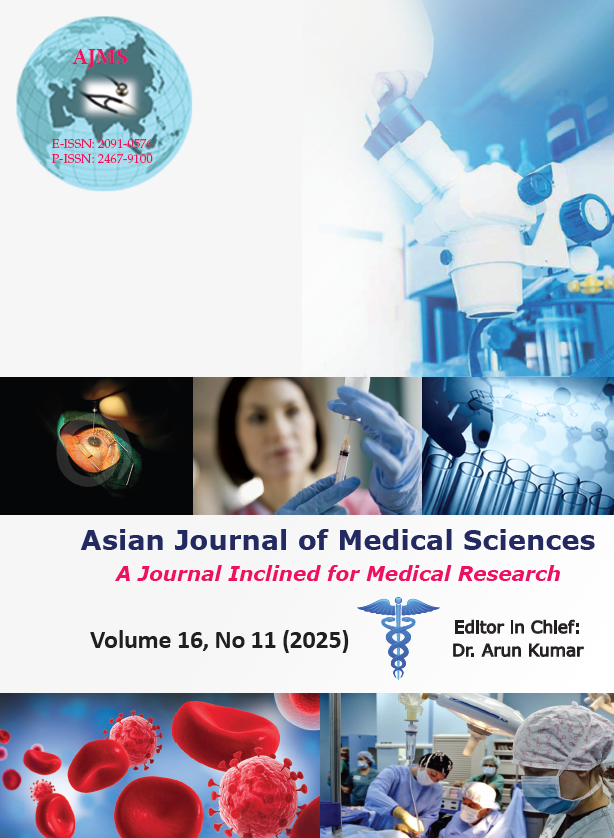Prediction of gestational diabetes mellitus in antenatal women based on fetal epicardial fat thickness, maternal abdominal subcutaneous fat thickness, and placental thickness
DOI:
https://doi.org/10.71152/ajms.v16i11.4834Keywords:
Antenatal; Fetal epicardial fat thickness; Gestational diabetes mellitus; Maternal abdominal subcutaneous fat thickness; Oral glucose tolerance test; Placental thicknessAbstract
Background: Gestational diabetes mellitus (GDM) is a common pregnancy complication associated with maternal obesity, placental thickness, and adverse perinatal outcomes, including pre-eclampsia and fetal metabolic disorders.
Aims and Objectives: This study aimed to determine whether variations in fetal epicardial fat thickness, maternal abdominal subcutaneous fat thickness (ASFT), and placental thickness are associated with the risk of GDM and adverse outcomes.
Materials and Methods: This prospective cross-sectional study included 139 patients treated at the Barnard Institute of Radiology, MMC, and RGGGH between May 2021 and October 2022. Fetal epicardial fat, placental thickness, and ASFT were measured via ultrasound and compared with oral glucose tolerance test results at 20–22 weeks to predict GDM. GDM cases were followed up until term to assess delivery mode, neonatal outcomes, and complications.
Results: Correlations were observed between Random Blood sugar, placental thickness, abdominal subcutaneous thickness, and epicardial fat thickness in pregnant women with and without GDM. GDM was present in 20.1% of 139 patients. Significant positive correlations were observed between the RBS and placental thickness (r=0.316, P=0.0002) and between the RBS and epicardial fat thickness (r=0.552, P=0.0005). Placental thickness differed significantly in GDM patients (2.91±0.66 mm) compared to non-GDM (2.35±0.64 mm; P=0.0001). Abdominal subcutaneous and epicardial fat thicknesses were also significantly higher in GDM patients (P=0.011 and P=0.0005, respectively).
Conclusion: The combination of Epicardial Fat Thickness, Abdominal Subcutaneous Fat Thickness and Placental Thickness is a predictive factor for GDM during the early second trimester, with EFT being the most significant. Early prediction and intervention for GDM using these parameters may help reduce maternal and fetal complications.
Downloads
Downloads
Published
How to Cite
Issue
Section
License
Copyright (c) 2025 Asian Journal of Medical Sciences

This work is licensed under a Creative Commons Attribution-NonCommercial-NoDerivatives 4.0 International License.
Authors who publish with this journal agree to the following terms:
- The journal holds copyright and publishes the work under a Creative Commons CC-BY-NC license that permits use, distribution and reprduction in any medium, provided the original work is properly cited and is not used for commercial purposes. The journal should be recognised as the original publisher of this work.
- Authors are able to enter into separate, additional contractual arrangements for the non-exclusive distribution of the journal's published version of the work (e.g., post it to an institutional repository or publish it in a book), with an acknowledgement of its initial publication in this journal.
- Authors are permitted and encouraged to post their work online (e.g., in institutional repositories or on their website) prior to and during the submission process, as it can lead to productive exchanges, as well as earlier and greater citation of published work (See The Effect of Open Access).





